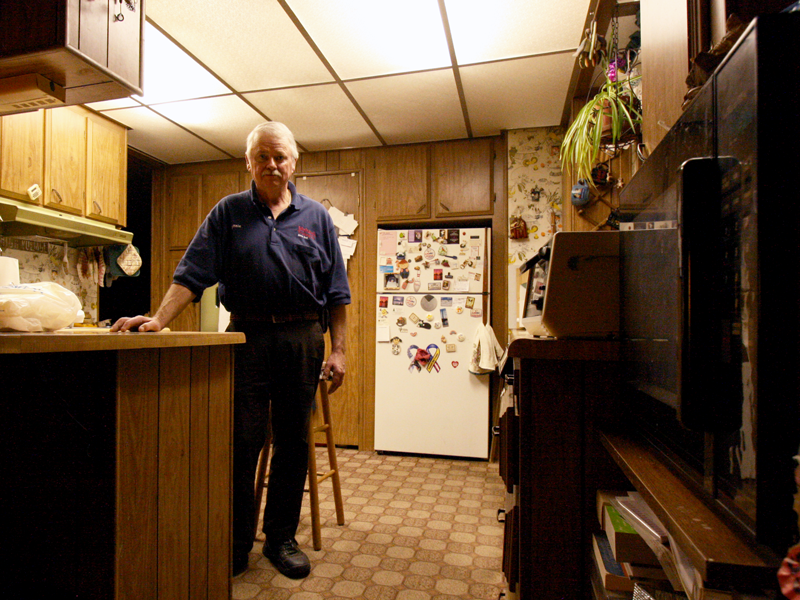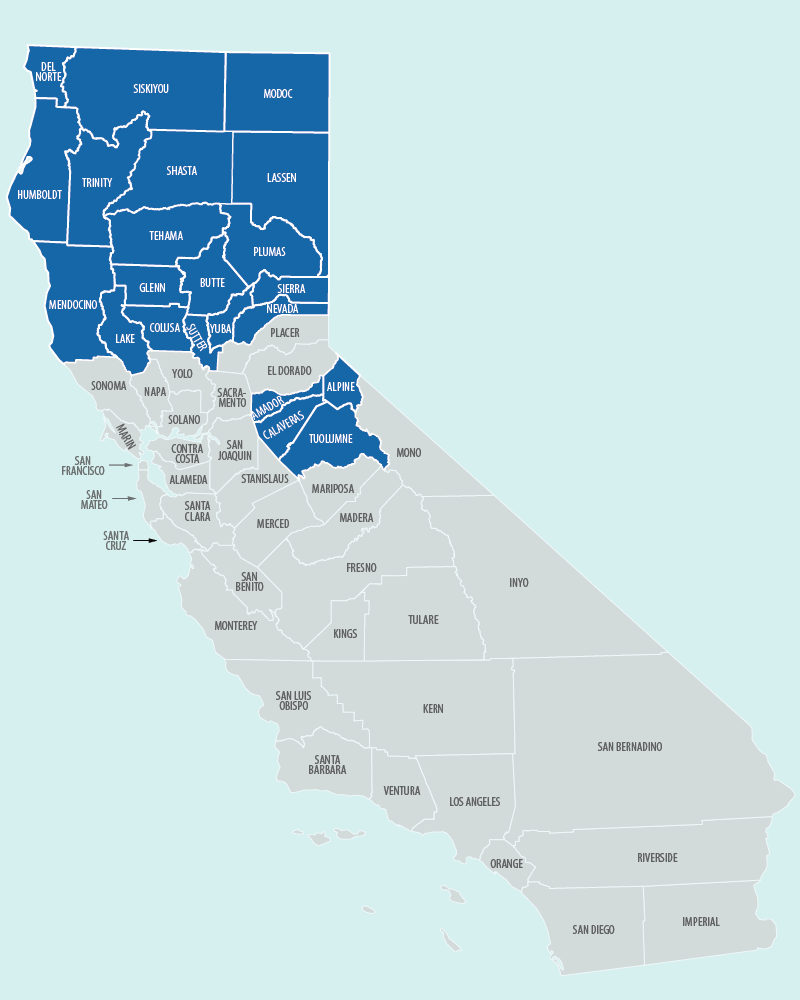When Dennie Wright went to sign up for Affordable Care Act insurance last year, it wasn’t a hard decision. His insurance agent told him he had only one insurer—Anthem Blue Cross—that he could buy from on the exchange, Covered California.
Wright lives in a modest house overlooking a pasture in Indian Valley. It’s a tiny alpine community at the northern end of the Sierra Mountains, close to the border with Nevada. He lives in one of 250 zip codes where Blue Shield of California stopped selling individual insurance policies in 2014.
“That was new to us, you know, Covered California. Anthem Blue Cross was the insurance carrier. Then of course, three months later I have a heart attack,” says Wright.

Dennie Wright and his wife Kathy go over health bills, related to care he got across the state line in Nevada. (Photo: Pauline Bartolone/Capital Public Radio)
More than once, he was flown across the state line to Reno for care. Wright and his wife, Kathy, now have piles of medical bills and insurance paperwork. Anthem Blue Cross covers emergencies when they happen out-of-state but not routine doctor care in another state.
But Wright says traveling to doctors within California is not as safe or as convenient for him as going to Reno.
He continues to see the Nevada doctors who put a defibrillator in his chest and saved his life. Anthem Blue Cross will pay for some of the bills, but the Wrights still don’t know if everything will be covered.
There are other insurance options for Wright, but not through Covered California. Although he didn’t need a subsidy, he was left in the same position as people in his area who do need financial help to buy insurance.
Lower income people cannot take their business to a competitor, because the exchange is the only place customers can use federal subsidies to help them buy health insurance. And for those people, Anthem is the only option.
“I mean, you should have some choices, especially if you’re going to have one that’s not going to cover you in the places you choose to go,” Wright says.
Covered California Executive Director Peter Lee offered a different impression of choices in the marketplace last July.
“In every corner of the state, consumers will have at least two plans to choose from, and in most areas, where most of the Californians live, they can choose between five or six plans,” said Lee during an event to announce the marketplace’s 2015 plans and premium rates.
But in 22 counties in Northern California, there are zip codes where there is only one choice of insurer. There are areas around Monterey and Santa Cruz on California’s Central Coast that also have only one carrier.
Blue Shield of California said it had to stop selling individual plans in areas where it didn’t have a contracted hospital nearby. It said it offered doctors certain rates to keep the premiums low, but not enough doctors accepted those payment rates.
Covered California estimates that statewide, there are 28,896 Covered California customers who have only one choice of insurance carrier, slightly more than 2 percent of the total exchange membership as of November 2014.
Lee says now, the exchange is working to increase the range of choices in places where there are none. But he says the situation existed long before the exchange.
“The challenges of northern, rural counties have been there for a long time and are still a challenge that we’re trying to address head-on,” says Lee.
Lee says the exchange is now discussing how to bring more insurer competition to these areas in 2016.
“We aren’t the solution to all the problems that have always been there in terms of challenges in rural communities, and that’s something we’re certainly looking at how to improve access and choice, and we’ll continue doing that,” says Lee.

Dennie Wright lives in rural Northern California, where many areas have just one insurer selling plans on Covered California. (Photo: Pauline Bartolone/Capital Public Radio)
Covered California should help increase the number of insurers, says consumer advocate Anthony Wright from Health Access. And he says policy makers should also lean on insurers and providers to participate in that market.
“Some of this is a combination of putting pressure on the insurers, and some of this is trying to do work to actually increase the number of providers on the ground in these areas, whether through more training, [or] incentives to be in some of these more rural areas,” says Anthony Wright.
Wright, the advocate, says more insurers in the marketplace makes it more likely people can get the care they need.
“At one level, we’re trying to make a functioning market, but it still means that consumers are at the mercy of the market.”
This year, people who want more choice than what Covered California offers must venture into the broader health insurance market if they can afford it.






























